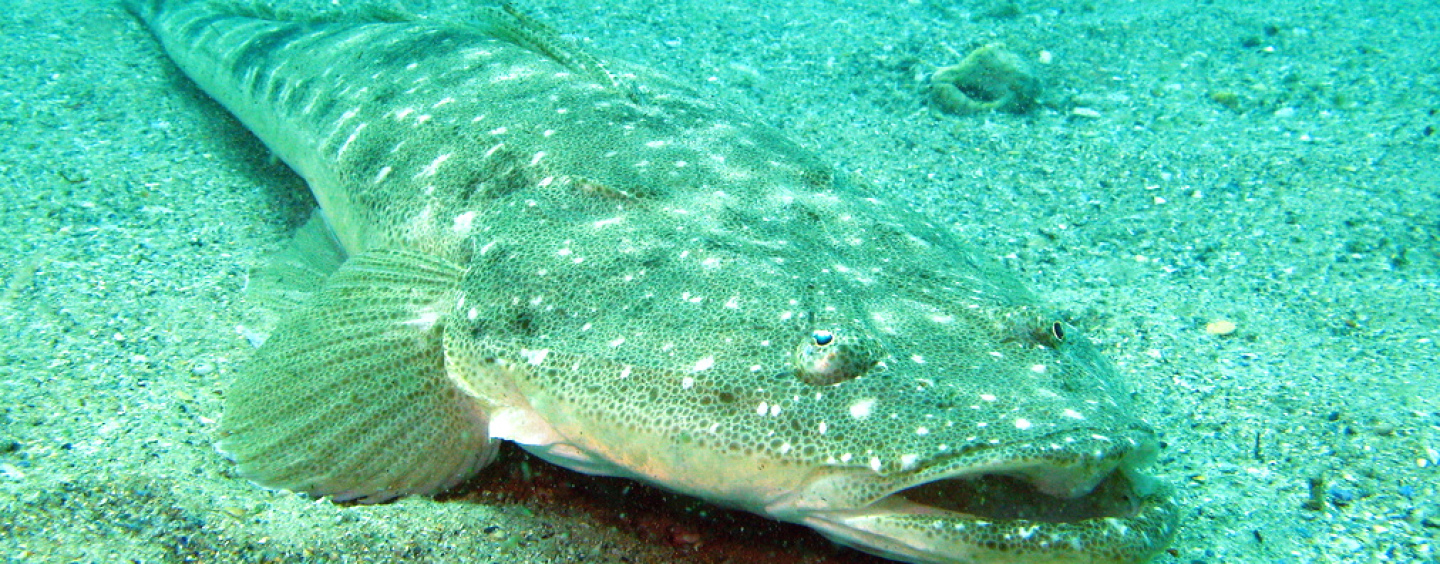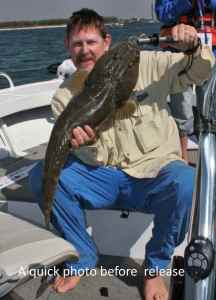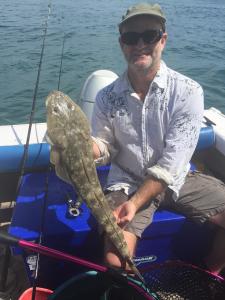Flathead is a very popular fish to catch in Australia. For this flathead season, Kevin Ballantine and Nic Welch offer very practical advice for catching the favourite fish in Gold Coast waters.
The Right Conditions
The most productive areas for flathead are usually in close proximity to some form of weed bank. This may be an extensive shallow bank only accessible at high tide or just a single small outcrop on the edge of a small gutter. The flathead will position themselves in areas where the composition of the mud/sand bottom is extremely fertile, nutrient-rich, and provides the perfect environment for juvenile prawns, crab and baitfish to hide and grow quickly.
Large flathead can reside in deep water next to structures such as bridge pylons, wrecks, rock bars, submerged trees and rock walls. However, most flathead are generally caught in 1-2m of water and congregate around the edges of sandbanks, weed banks, and mouths of shallow estuaries.They are also found in shallow waters, near oyster leases and mangroves.
Tides and Times
The best tides to fish for flathead is during the first 3 hours following the high tide, especially in areas where a large expanse of water drains over yabby banks. The flathead will lie in schools, head first, towards the current, camouflaged on the seabed ready to ambush their unsuspecting prey.
Dawn and dusk are the best times to catch flathead. However, very large specimens can be caught during the night even at dead low tide, especially when using live bait. During calm weather, with less than 10 knots of breeze, is the most productive for flathead catching.Sometimes a shower of rain can trigger the fish to start feeding if it has been quiet beforehand.
Equipment
Rods and Reels:
Two rods will cover most situations. A 7’ 2-4 kg spin rod is sensitive enough for trolling small hard bodied lures and is still perfect for throwing lightly weighted plastics long distances. For deeper and more current driven areas, stepping up to 4-6 kg rod will make using heavier jig heads and big plastics easier to handle, it will help you stop the big mulloway and trevally that frequent the same terrain.
A 2,000 or 2,500-sized reel is the perfect match for the 2-4 kg rod, spooled with 3 kg braid, and leadered up with 12lb fluorocarbon makes casting all day effortless, this light combo is more than capable of landing large flatties. The heavier of the two outfits can be either a 3,000-4,000 spin reel or a bait caster,9 kg braid and 20lb fluorocarbon make a powerful combination able to stop just about anything.
If using bait, use a leader approximately 1m in length with a small ball sinker above the swivel. If anchored next to a run-off from a sandbank, choose the smallest ball sinker which will allow your line to slowly drift with the current. Flick upstream into the shallows and let your line drift into deeper water, as the flathead will lie on the edge of the drop-off.
Lures:
A 2-3 inch deep diving hard body lure, or a 3-inch curly tail soft plastic, are effective lures for flathead, particularly around oyster leases.Bright pink or greeny-yellow colours work well.Use a slow retrieve with a twitching action.If trolling, troll in the direction of the current.
Quite often, the tide height will dictate which method is the most suitable. High tides allow access to shallow highest margins along banks, but the fish will be spread out and easy to spook; so, trolling small hard-bodied lures 30 to 40 metres back will allow more ground to be covered.
When the tide is about half way through the run-out, clearly defined drains will have formed and it is here that numbers of flathead congregate waiting to ambush anything that is trying to vacate the rapidly diminishing bank. Soft plastics are the go in this situation. A 3-4 in minnow or grub-style plastic matched to a lightly weighted jig headand slowly worked back from the head of the drain and worked all the way back, can provide explosive action.
Lures fall into two categories—hard and soft—and both are equally effective. Hard bodies are great for trolling and the simplest option when exploring new areas whereground needs to be covered. Locally made pig lures, Cultiva mira shads, Zerek Tango shads, and Tilsan minnows are popular. However, any bibbed lure in the 45-65mm range designed to swim between two and six feet will work. Flathead lure colours range from the wildest fluro creations to a variety of pinks right down to natural transparent models that are a must when the water is crystal clear. Soft plastic variations can range from single and double tail grubs, minnows, shads, or vibes. Again, the colour choices are just as plentiful as the hardbodies. Atomic, squidgy, Mcarthy, Samaki, Jackal, and Berkley brands provide a broad selection for all applications.
Baits:
Live bait, such as herring, mullet, yabbies and prawns, are definitely the gun baits in the estuaries and are worth the extra effort to find. Dead bait include fresh WA pilchards, white and frogmouth pilchards, and strips of mullet or tailor. Choose a hook size appropriate to the bait you are using, with a hook gape of about 1cm.Suicide and bait holder hooks are good choices.
Technique and Strategy
Choose an area where water drains out over a ledge or through a narrow channel.Anchor downstream of this point and flick your bait or lure upstream.Let your bait drift down with the current or slowly retrieve your lure in the direction of the current.
If you have an electric motor and a pair of polarised sunglasses, flathead can sometimes be caught by sight. Flathead can be spooked if your boat gets too close, so cast well upstream of the fish and let the bait or lure travel to the fish.
Keep moving and trying different locations to avoid wasting time casting where there are no fish. Try working an area for ten minutes and if it is quiet, then move on. Remembering the same location might produce later in the day when the water height and clarity have changed.
Be careful of the spines on the corner of the jaw of the flathead and the dorsal fin. These spines are venomous and will inflict half an hour of pain to the unlucky recipient.Always use a rag or a pair of pliers when removing hooks.
If using bait, flathead have a tendency to mouth/suck the bait instead of swallowing the hook straight up, so let the flathead run for a couple more metres before setting the hook. Use a landing net as flathead have a tendency to throw the hook right next to the boat.If fishing from shore, drag the flathead up onto the beach instead of raising your rod next to the water edge.
Dusky flathead are a common catch in the Southport Broadwater and have a minimum size limit of 40cm and a maximum size limit of 75 cm, with a bag limit of five (regardless of flathead species).The bigger flathead are the female breeders and should always be released unharmed. The smaller flathead are the tastiest to eat, so there is no point keeping the larger ones. If we all release the large ones, there will be a sustainable fishery well into the future for generations to come.
—————
Where to find flathead on the Gold Coast
Along the break walls of the Southport Seaway
Along the western side of Wavebreak Island
Around Carter’s Bank, 100metres north of Wavebreak Island
Around Crab Island
Around Brown Island
The Aldershots
Mouth of the northern arm of Coomera River
Mouth of the Pimpama River
“The Junction” at Coombabah Creek and southern arm of Coomera River
The entrance to Bullock Head and Wasp creeks along the northern arm of Coomera River
Around the Never Fail Islands
Five Ways and Tiger Mullet Channel
The mouth of the inlet at the northern end of South Stradbroke Island
Kalinga Bank
Just outside the entrance to Swan Bay on the southern end of North Stradbroke Island (NB. Swan Bay itself is a marine park and all fishing is prohibited inside)
/Jan2018





























